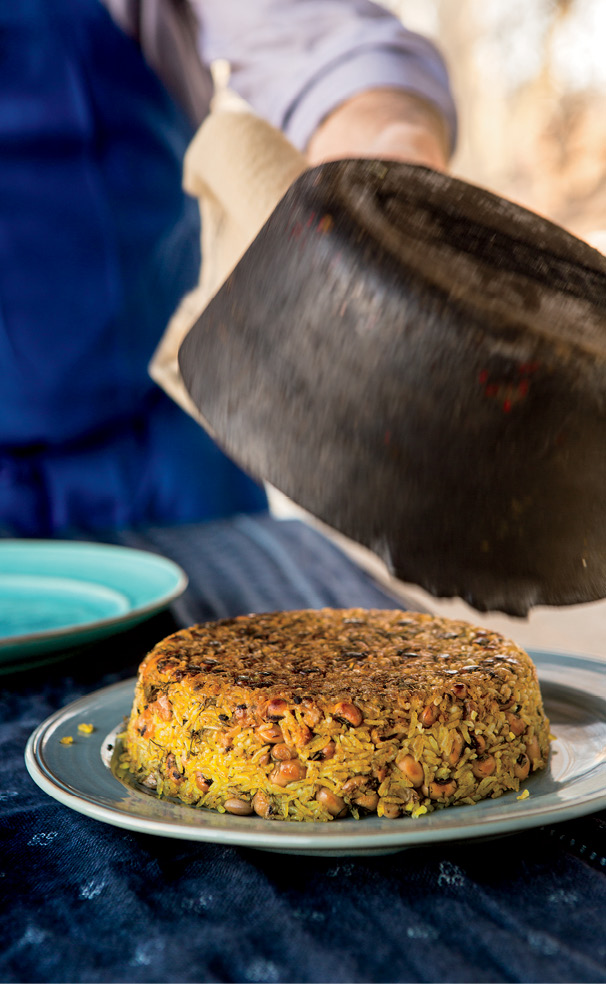
Persian Rice
“If you’re feeling like a rock star, flip the entire (well-rested) pot of rice onto a plate, unmolding it in one gorgeous, golden dome.”

When Avi Mor married my half-sister Merav (my father’s daughter from his first marriage), my father had been living in the United States for several years. The first time he met Avi’s family was on the Sabbath before the wedding. Avi’s sister made the rice that day and she had taken it a bit too far. The tahdig had gone from crispy and tender to hard and chewy. But it was too late to do anything about it, so the rice was served. My father was a lone Bulgarian in a crowd of 50 Persian men that he was meeting for the first time. There were 50 suspicious pairs of eyes on my father, watching to see what this outsider would do with the challenging rice. When my father swallowed it down without blinking, he was immediately accepted into the family.
At Zahav, we regard the rice as so special that we serve it with our Mesibah (party) menu, to give you an idea of just how cool it is. The method for cooking it is very different from what we’re used to in America.
Instead of steaming the rice in just enough liquid to tenderize the grains, this method calls for blanching presoaked rice in a large amount of salted water until it’s barely al dente. The rice is drained and then added to a heavy-bottomed pot that has been lightly oiled. The pot is covered with a lid that is wrapped in a kitchen towel and set over very low heat for the rice to finish steaming. The towel helps regulate the moisture inside of the pot, allowing the rice to take in only as much as it needs. This is similar to the “fuzzy logic” employed by fancy rice cookers. But a rice cooker is much more expensive than a kitchen towel. And far less absorbent.